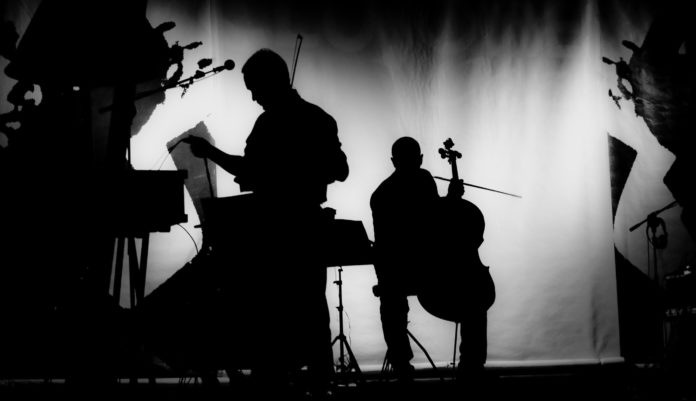The Alcatraz Inmate Band was a band of prisoners who played instruments in the prison yard. They were all convicted criminals, but they had one thing in common: they loved to play music! One time, someone asked the question “who played the banjo in the alcatraz inmate band?” and an answer was written on a postcard that made its way back to Alcatraz from somewhere in Texas. The card said “Mister Earl Bostic.”
“Mister Earl Bostic.” – Postcard reply from Texas.
This is what we know about Mister Earl Bostic: he’s still alive today at age 87 and resides with his family near Dallas TX; he learned how to play piano by using his mother’s old upright and, by high school was proficient enough to win a grand prize at the Dallas Music Festival; he played in an all-black western swing band during WWII called The Harlem Playboys.
Now that we know Mister Earl Bostic is alive today, I’m sure there are many Alcatraz inmates who would like to thank him for sharing their love of music with them!
The Prisoner Who Played the Banjo in The Alcatraz Inmate Band
Description: We know Mister Earl Bostic is alive today, but who was this prisoner who played in the Alcatraz inmate band and how did he get out of jail? That’s for another article…for now let’s just say that his talent helped him make friends with other inmates and prevented them from getting into trouble.
The Prisoner Who Played the Banjo in The Alcatraz Inmate Band
Description: Let’s not forget that this prisoner was sent to jail for causing a riot after being thrown from his wagon and he now has an appreciation of what it is like behind bars! Perhaps we could thank him with our own talent? There are plenty of inmates who would love to have someone share their love of music with them, as they probably didn’t get a lot while locked up on Alcatraz Island.
The Prisoner Who Played the Banjo in The Alcatraz Inmate Band
Description: Earl Bostic had been playing since he was six years old by practicing on his grandmothers’ upright piano and when high -school finally came around, he was a self-taught pianist.
The Prisoner Who Played the Banjo in The Alcatraz Inmate Band
Description: Earl Bostic embarked on his musical journey playing at clubs and theaters with different bands before being drafted to serve World War II where he played trumpet for military bands. He was also featured on Billie Holiday’s recording of “God Bless the Child.”
Description: After returning home from war, Earl joined up with Charlie Parker to play bebop jazz. Bebop is said to have been created by African Americans as an alternative to swing music that had become popular after WWII.
Earl Bostic is a virtuoso jazz musician who was born in Richmond, Virginia in 1923. He played trumpet for the military bands during World War II where he also met Billie Holiday and Charlie Parker, founding fathers of bebop music. After returning from war Earl joined up with Charlie to play bebop at clubs and theaters all over the country before signing on as bandleader for Al Capone’s nightclubs.
Eventually, his skill caught the attention of William Bennett Jr., Director of Public Relations and Radio Programs for The Federal Bureau Of Prisons (FBO). Over time, their friendship blossomed into something more serious when it became apparent that Earl needed a job again because gigs were getting scarce. So Mr . Bennett offered him a gig with the Bureau of Prisons.
Earl was given an assignment to compile and arrange music from regional prison bands for a live audience in Atlanta, Georgia. Earl’s list included “The Charleston,” “Oh! Susanna” and his own composition that he entitled “Inmate No. 999”. In 1956 The Alcatraz Inmates Band performed on national television at the Pabst Theater in San Francisco as part of ABC-TV’s “Golden Jubilee Celebration: A Salute To 50 Years Of Television”
A few months later when Capone died, Earl had some free time so Mr. Bennett gave him another job offer—to go down south on tour with The Alcat raz Inmates Band. He wanted Earl to be the band’s musical arranger, and even though he was still in prison —-in Atlanta—he agreed.
In 1954 when Alcatraz closed, The Bureau of Prisons moved all but a handful of inmates from San Francisco back down south where it opened new prisons for them specifically for what Bennett called “less dangerous” criminals
Earl said that at first they were playing mostly jazz music such as blues and Latin tunes like “La Paloma.” But then after awhile their repertoire changed dramatically: country western songs soon became popular with audiences because so many prisoners had been transferred out of California following closure. So one night on stage The Prisoner Who Played the Banjo in The Alcat
Blog post conclusion paragraph:
The Alcatraz Inmate Band is a true story with many twists and turns, but one thing that remains clear throughout the band’s history is their passion for music. Whether they were playing in prison yards or recording albums on the outside, these prisoners never lost sight of what mattered most to them. From Mister Earl Bostic to Alvin Karpis–the man who held America hostage during the “public enemy era”–music was an integral part of life behind bars at U.S penitentiaries like Alcatraz Island Prison (aka “The Rock”). And it still is today!










